Caleb Orecchio here with thoughts and ramblings on Chester Brown’s Yummy Fur brought on by reading Brian Evenson’s book, Ed vs. Yummy Fur–and other news.—————————————————————————————————
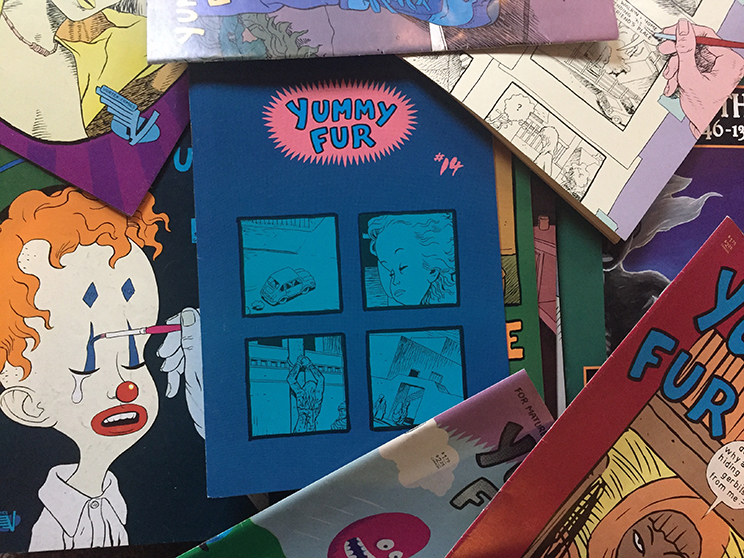
A recent conversation I had with Comics Workbook’s fearless leader, Frank Santoro, about Chester Brown’s Yummy Fur has got me all hot and bothered about the title again. Every so often I go back and flip through my copies and marvel at the energy of Brown’s early strips, and the absolute beauty and power of the later stuff going into Underwater. YF is the promise of the undergrounds fulfilled as a vessel for looking inward and taboo exploitation, and there is virtually limitless aspects of the title to consider and examine as a 21st Century cartoonist.
Consequently, I recently read Ed vs. Yummy Fur: Or, What Happens When a Serial Comic Becomes a Graphic Novel by Brian Evenson, published by Uncivilized Books–being their debut title in their line of prose comics criticism, Critical Cartoons. The book compares and contrasts “Ed, The Happy Clown” as a serial within Yummy Fur, and Ed, The Happy Clown the graphic novel. Now, I will admit that the book left a lot to be desired due to the titular focus of Ed which I felt limited the scope of Evenson’s point. However, I was fascinated with Evenson’s consideration of Brown’s Gospels as being inextricably linked to the reading of “Ed” within Yummy Fur.
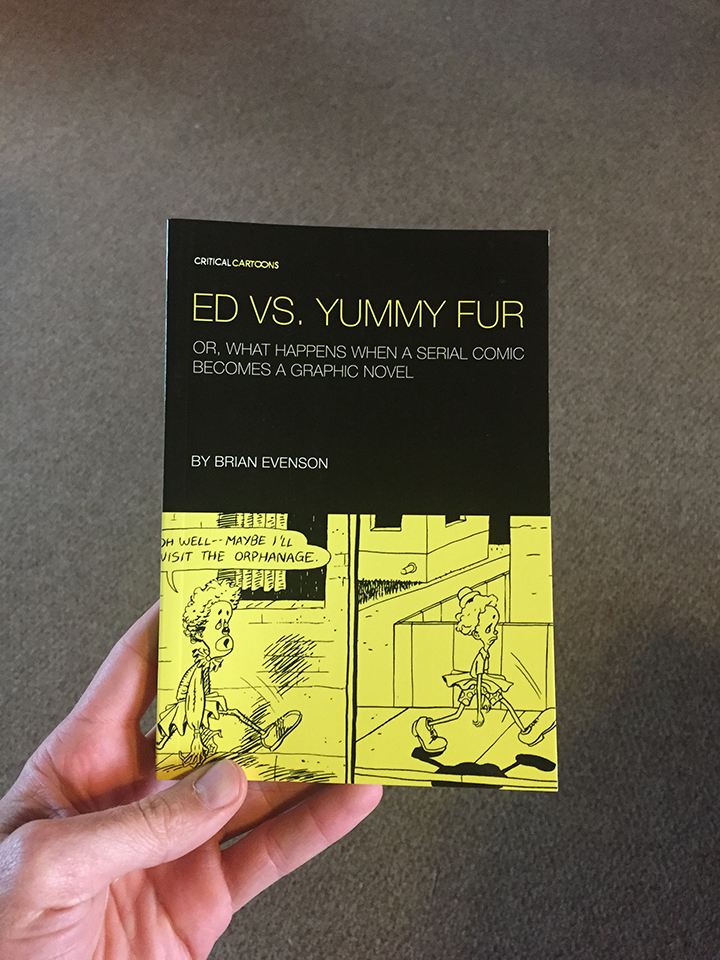
Brown’s Gospels (being The Book of Mark and the unfinished Book of Matthew) are a bit lost on my generation (millennials). This is no doubt due the fact they haven’t been reprinted into a book, but also I think it is simply difficult to understand the significance of such a work during the time of its publication. From what I can gather, no cartoonist had really done a Bible adaption in such a faithful (ha), straight-forward, and non-judgmental way (at least, certainly, for “Mark” this is particularly true). The only other widely-known comics Bible adaption I know of from up to that point is Mayer and Kubert’s, which could basically be considered easily-digestible, white-washed propaganda.
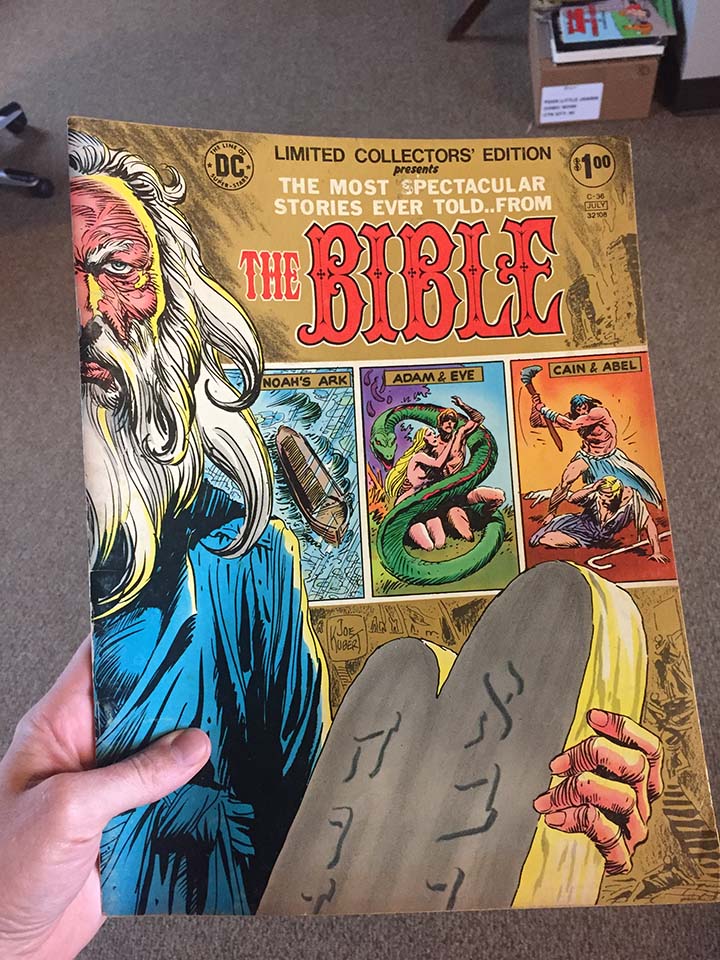
In an interview with Brown from Evenson’s book, Evenson says (or writes, because I assume the interview took place over email or at least that’s what it feels like–I wouldn’t be surprised if Evenson just gave Brown a questionnaire to fill out and mail back), “Issue #4 [of Yummy Fur] is one of the few issues of comics I remember being really shocked by. I think it was less because of the sex and murder at the end of the Ed material in that issue and more because we go straight from that to an adaption of the Biblical book of Mark.”
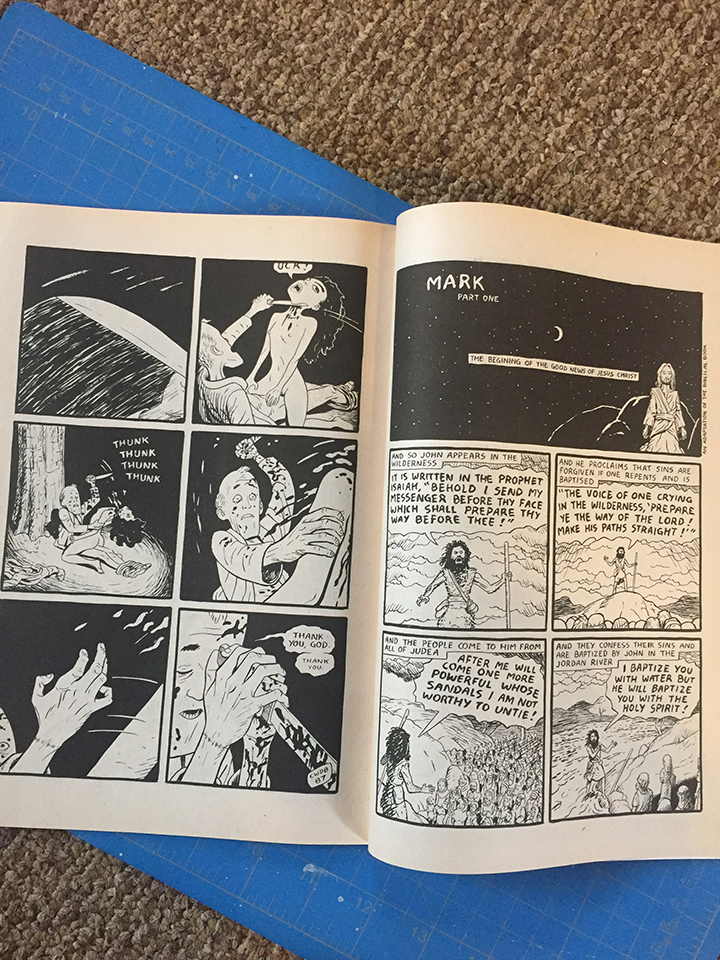
I think what Yummy Fur readers were expecting from Brown’s “Mark” was biting satire and exploitation, and obviously the lack of both and the general neutrality of the adaption shocked his fans more than any “parody” could have. However, I think if Brown had published “Ed” and the Gospels in their own separate books, the effect Evenson talks about experiencing would be less severe or memorable.
After reading this, and the rest of Ed vs. Yummy Fur, I can’t help but see YF as anything less than one complete work–as oppose to a book containing many serialized stories. All comics in YF from “Ed” to “Showing Helder” to “The Little Man” to “Fuck”, (AND the letters pages) etc. have an interesting give and take with the Gospels they share a book with. In fact, I’d go so far as to say that there is an unsevered umbilical chord connecting the early pre-“Ed” material to the later autobio stuff; and going further into Underwater. I see Yummy Fur being the record of a developing cartoonist constantly tinkering with his craft, and a self-aware conscience looking at it’s old-self in the face. When you read the “Playboy” stories, the juxtaposition of the Gospels are impossible to ignore while reading about young Chester’s religious upbringing. It’s like the Gospels and the teachings of Christ are always in the back of Brown’s mind and dictate his actions and motivations for better or for worse.
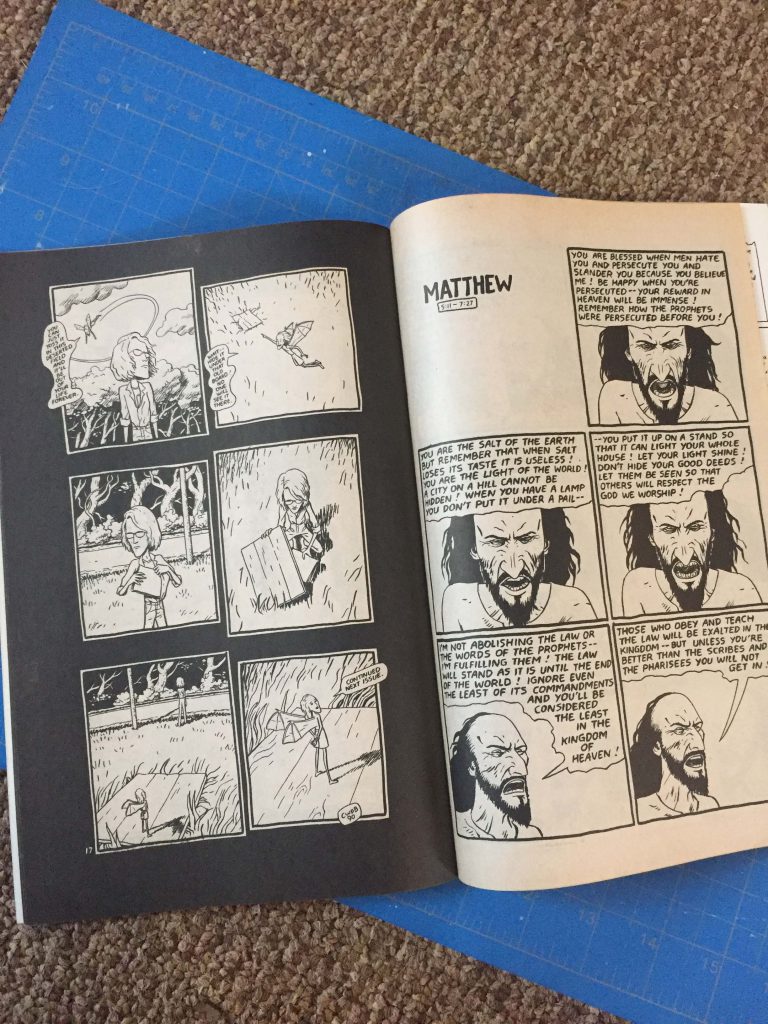
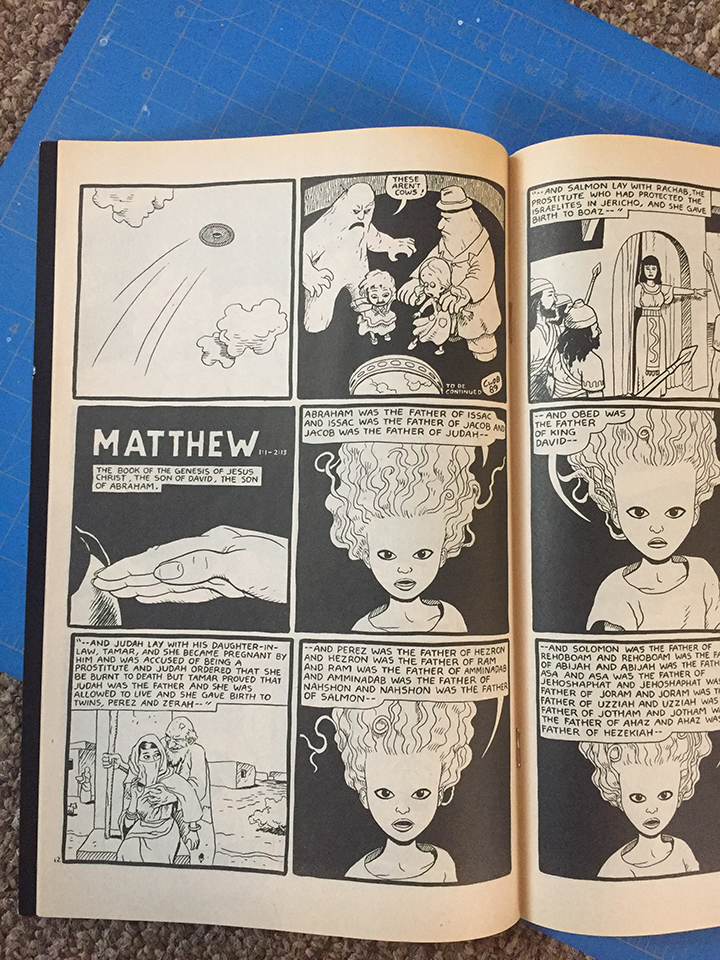
Anyone still here? Well if you are, here is what I’m picturing in my head:
A multi-volume, “The Complete Yummy Fur.” Everything reprinted (including Vortex house-ads–like, literally just scan mint copies of Yummy Fur cover to cover and sew them together) even the letters column, aka “The Fur Bag”–of course all this would be done as a bootleg, to Chester Brown’s chagrin I assume. The last volume would be subtitled; the complete Underwater. Unedited, these volumes would contain an interesting insight into an individual’s reckoning with their “conflicting” interests, political views, personal stories, and relationships with readers and “the times”.
Something to chew on for 21st Century cartoonists like myself.
-CO
BONUS: Lookit this! An observant, Tom K from the 90s in the letter pages of Underwater. Tom would go on to publish Evenson’s book in 2014.
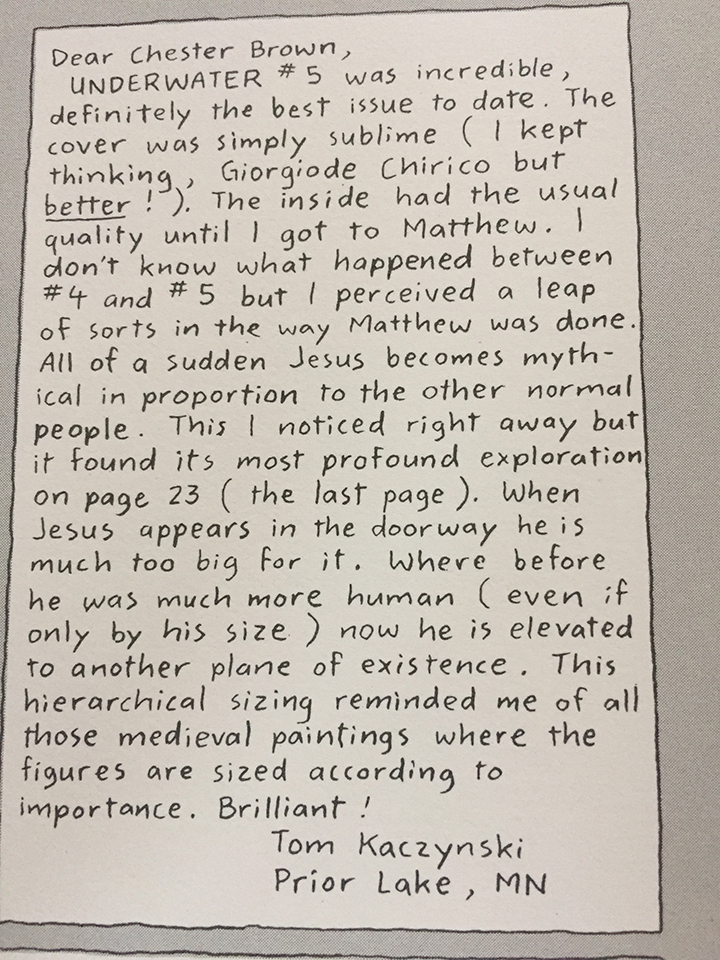
—————————————————————————————————
if you don’t know, now you know
-
Jim Rugg on Paste Magazine talking Street Angel.
- Fantagraphics has a sale going on until tomorrow! Don’t miss out!
- Need to know what the program for CAB 2017 looks like?? Here it is.
- Karl Stevens is the latest guest on Process Party.
- Campbell White is the latest guest on Inkstuds.
—————————————————————————————————
Suzy and Cecil– 10-30-2017 – by Sally Ingraham
—————————————————————————————————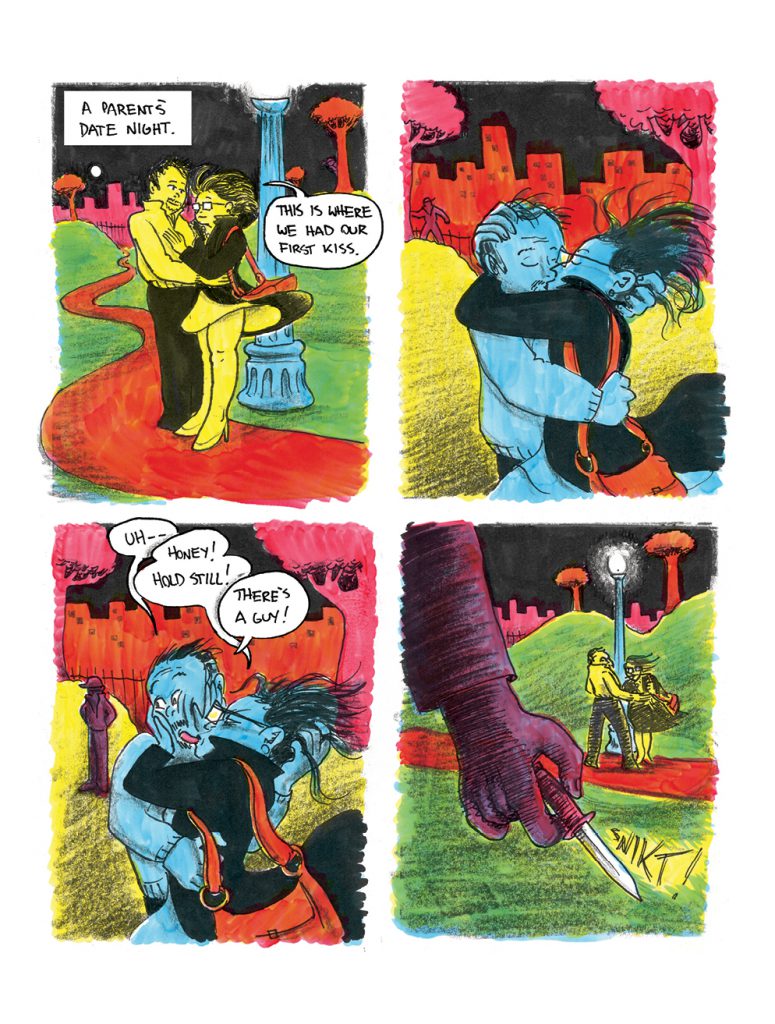 Joanie and Jordie – 10-30-2017 – by Caleb Orecchio
Joanie and Jordie – 10-30-2017 – by Caleb Orecchio
—————————————————————————————————
Cozytown– 10-30-2017 – by Juan Fernandez
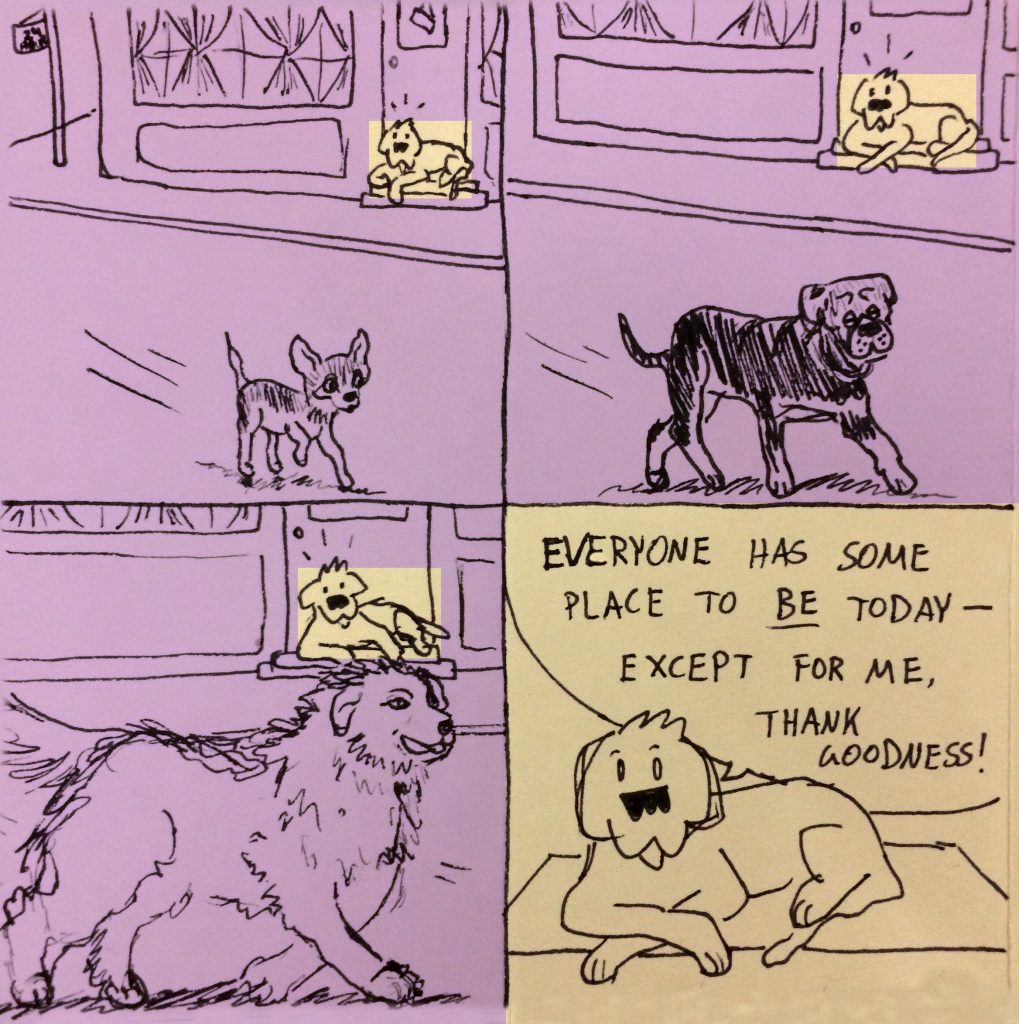

Caleb, glad to see some Yummy Fur writing! Yummy Fur was my gateway to “alt” comics. I found the first issue at a flea market for 25 cents, while digging through a stack of Grimjack. I agree with you about the value of the original comics. I would add the quality of Yummy Fur’s covers as another virtue. Brown was doing things with typography and design that no one else was doing in comics at that time.
Hi Jim—I agree, those covers practically glow next to anything else found in a longbox. I never honestly thought how transgressive they were though, but you’re right—and I’m just now realizing this because of your comment but, Brown, like Ware and Clowes later, really did skirt the lines between cartoonist and graphic designer. Particularly on Yummy Fur.
I have 2 complete runs of Yummy Fur, and I have always felt that the whole was much greater than the sum of it’s parts…and the letters, ads and editorial bits are essential, especially every time I revisit the series! Funny thing…I met Chester recently and he not only autographed my Evenson book, but he drew a somewhat elaborate sketch on the first page that I sadly can’t share with you through the comments. I had one of my runs of YF bound into a very handsome hardcover, and I keep it always within arms reach and the great thing about the book is there truly is a story or section for literally any kind of mood. Thanks for the terrific article and for bringing the ‘awe and wonder’ of Chester Brown’s Yummy Fur back into the light! It is one of the greatest runs in all of illustrated literature in my humble opinion! Viva Chet!!!
Just like Jesus ducking under doorways, Louis Riel also grows in size during the course of that comic.